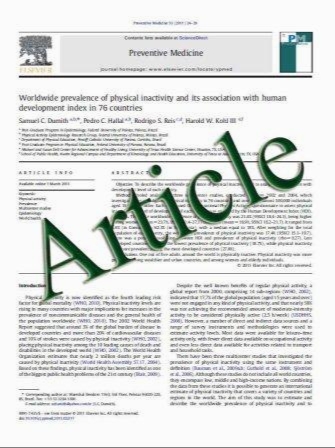Association of serum levels of arachidonic acid and eicosapentaenoic acid with prevalence of major adverse cardiac events after acute myocardial infarction
- نوع فایل : کتاب
- زبان : انگلیسی
- مؤلف : Masayuki Ueeda Takenori Doumei Yoichi Takaya Nobuhiko Ohnishi Atsushi Takaishi Satoshi Hirohata Toru Miyoshi Ryoko Shinohata Shinichi
- چاپ و سال / کشور: 2010
Description
We studied the association of serum levels of arachidonic acid (AA) and eicosapentaenoic acid (EPA) with the prevalence of major adverse cardiac events (MACE) after acute myocardial infarction (AMI). We measured serum AA and EPA on admission in 146 consecutive AMI patients. The primary clinical endpoint was occurrence of MACE, defined as cardiac death, occurrence of heart failure, reinfarction, recurrent angina pectoris, and requirement of coronary intervention. Common logarithmic transformed serum levels of AA (logAA) and EPA (logEPA) were used in the analyses. The optimum cutoff point of each fatty acid used to distribute patients into two groups for Kaplan–Meier analysis was determined by receiver operating characteristic curves analysis. MACE occurred in 40 patients (27.4%). Kaplan–Meier analysis disclosed that the group with a logAA above the cutoff point [145.3 lg/mL (logAA 2.162)] showed a higher prevalence of MACE than those with a logAA below the cutoff point (P\0.01). Conversely, the prevalence of MACE was significantly higher in the group with a logEPA below the cutoff point [52.3 lg/mL (logEPA 1.719)] compared to the group with a logEPA above it (P\0.01). Similar to logAA, logAA/logEPA showed significant differences in the MACE-free curve between the two groups (cutoff 1.301, P\0.001). Cox proportional hazards regression analysis suggested that logAA, logEPA, and logAA/logEPA were independently associated with the prevalence of MACE. Although the present study included a limited number of patients with single-time point measurement, the results suggested an association of logAA, logEPA, and logAA/logEPA with the prevalence of MACE after AMI. The present study warrants further studies involving a large number of patients to confirm that the serum levels of these fatty acids and their ratios are predictors of MACE after AMI.
Heart Vessels (2011) 26:145–152 DOI 10.1007/s00380-010-0038-8 Received: 22 June 2009 / Accepted: 11 March 2010 / Published online: 21 October 2010


